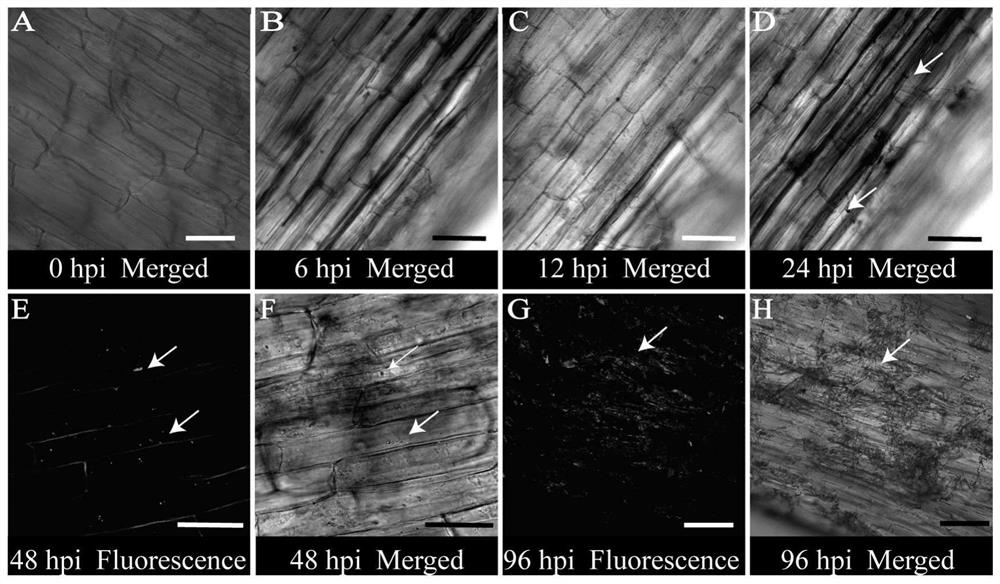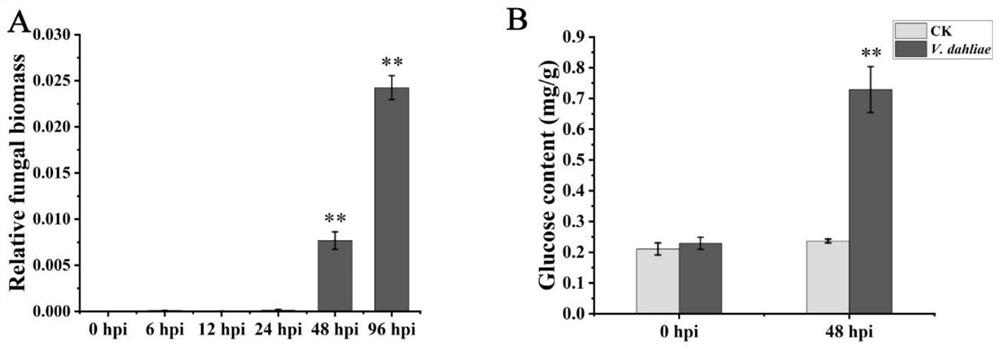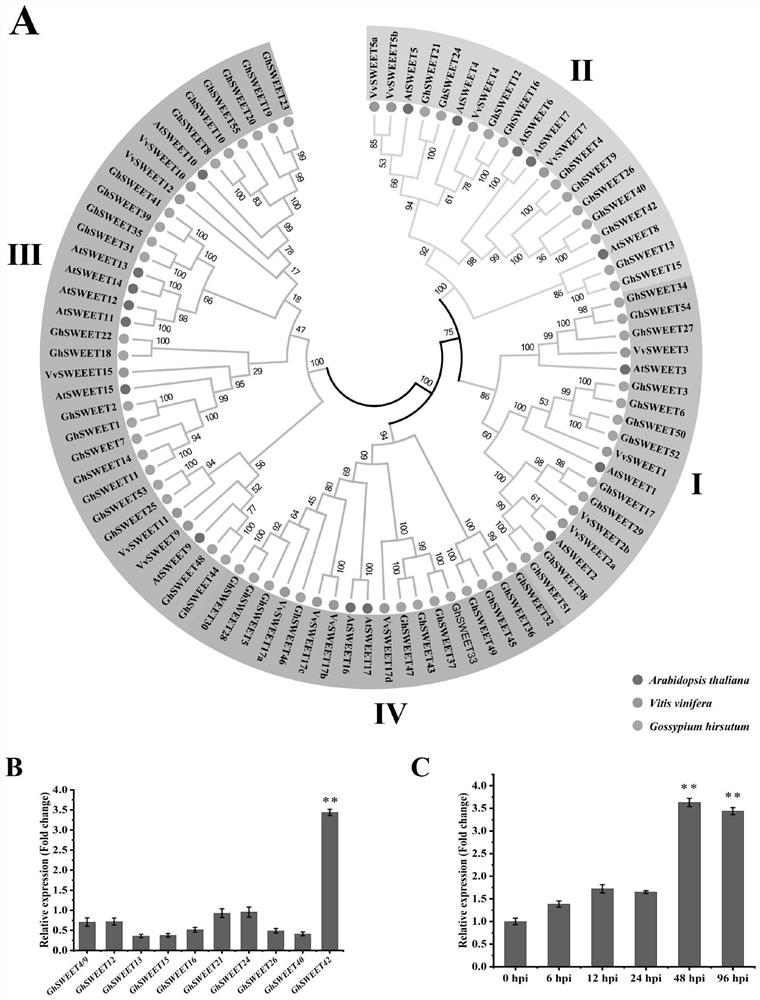Application of gene GhSWEET42 in prevention and treatment of cotton verticillium wilt
A cotton Verticillium wilt and anti-Verticillium wilt technology, applied in the fields of application, genetic engineering, plant gene improvement, etc., can solve the problems of lack of cotton germplasm resources and limited means of prevention and control of Verticillium wilt, so as to improve resistance and reduce Effect of Glucose Content
- Summary
- Abstract
- Description
- Claims
- Application Information
AI Technical Summary
Problems solved by technology
Method used
Image
Examples
Embodiment 1
[0050] 1. Materials
[0051] 1. Experimental materials and strains
[0052] Plant materials required for the experiment: cotton is the selfed seed of Zhongzhimian No. 2 in upland cotton; strains required for the experiment: Verticillium dahliae strain V592 with GFP, Verticillium dahliae strain V592 preserved in our laboratory.
[0053] 2. V592 culture and V592 infection
[0054] To determine the colonization process of Verticillium dahliae strain V592 in cotton, Verticillium dahliae with green fluorescent protein (GFP) was used to infect cotton and the fluorescence was observed under a confocal microscope. details as follows:
[0055] Take 100 μL of the spore liquid of Verticillium dahliae V592 with GFP stored at -80°C, inoculate it on the potato dextrose agar medium, cultivate it at a constant temperature and dark for one week at 25°C, cut the mycelium pieces the size of your thumb into pieces, and inoculate them on the In the culture medium, shake culture in a constant te...
Embodiment 2
[0068] 1. Association analysis of genes
[0069]The protein sequence of the grape SWEET gene family was downloaded from the Grape Genome website, and the protein sequence of the Arabidopsis SWEET gene family was downloaded from the TAIR database. The protein sequence of cotton (G. upland) was downloaded from the CottonGen website. The homology of the protein sequences of SWEET upland cotton, grapevine and Arabidopsis was compared, and then the phylogenetic tree was constructed by the neighbor-joining method, and the phylogenetic tree was constructed by MEGA (version 7.0).
[0070] Utilizing the protein sequences of SWEET family members of upland cotton, Arabidopsis SWEET family members and grape SWEET family members, MEGA7 software was used for evolutionary analysis, combined with previous literature research, the evolutionary tree was divided into four subgroups ( image 3 A). Because Verticillium dahliae infection can cause significant up-regulation of glucose content, the...
Embodiment 3
[0085] Arabidopsis overexpressing GhSWEET42 reduces resistance to Verticillium wilt
[0086] 1. Heterologous overexpression in Arabidopsis
[0087] (1) Take out the Agrobacterium liquid containing the recombinant plasmid (GhSWEET42-pCambia2300) from -80°C, activate the bacterial liquid, and use the resuspension liquid to adjust the OD of the bacterial liquid to 600 Adjust to 1.2, add the surfactant containing 0.02% silwet-77 into the bacterial liquid, and mix well.
[0088] (2) Two days before the blooming period of Arabidopsis thaliana, cut off the fruit pods, soak the cut Arabidopsis thaliana in the prepared bacterial solution for 60 seconds, then treat it in the dark for 24 hours, and then put it in the plant greenhouse normal growth.
[0089] (3) After Arabidopsis recovers to normal growth, carry out secondary infection.
[0090] (4) After the fruit pods of Arabidopsis thaliana matured, the seeds were harvested, placed in a centrifuge tube added with a desiccant, and th...
PUM
 Login to View More
Login to View More Abstract
Description
Claims
Application Information
 Login to View More
Login to View More - R&D
- Intellectual Property
- Life Sciences
- Materials
- Tech Scout
- Unparalleled Data Quality
- Higher Quality Content
- 60% Fewer Hallucinations
Browse by: Latest US Patents, China's latest patents, Technical Efficacy Thesaurus, Application Domain, Technology Topic, Popular Technical Reports.
© 2025 PatSnap. All rights reserved.Legal|Privacy policy|Modern Slavery Act Transparency Statement|Sitemap|About US| Contact US: help@patsnap.com



